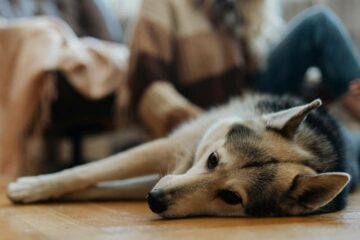Is Hyacinth Toxic to Dogs? Are Hyacinths Poisonous to Dogs?
Is hyacinth toxic to dogs? Are hyacinths poisonous to dogs? In this article, we’ll teach you all you need to know about hyacinths and dogs, including if they’re safe for dogs and what to do if your dog ate hyacinths already. We’ll then explain the two commands that will ensure your dog behaves around hyacinths and other plants that might be toxic.
Next, we’ll cover more you should know, such as how to keep your furry friends away from your hyacinths using barriers. Finally, we’ll instruct you on proper hyacinth flower care (when to plant, are they perennials, how to care for hyacinths, indoor care, do bulbs multiply, bloom time, growing in pots, watering) and more to know when you have dogs. Keep reading!
Is Hyacinth Toxic to Dogs?
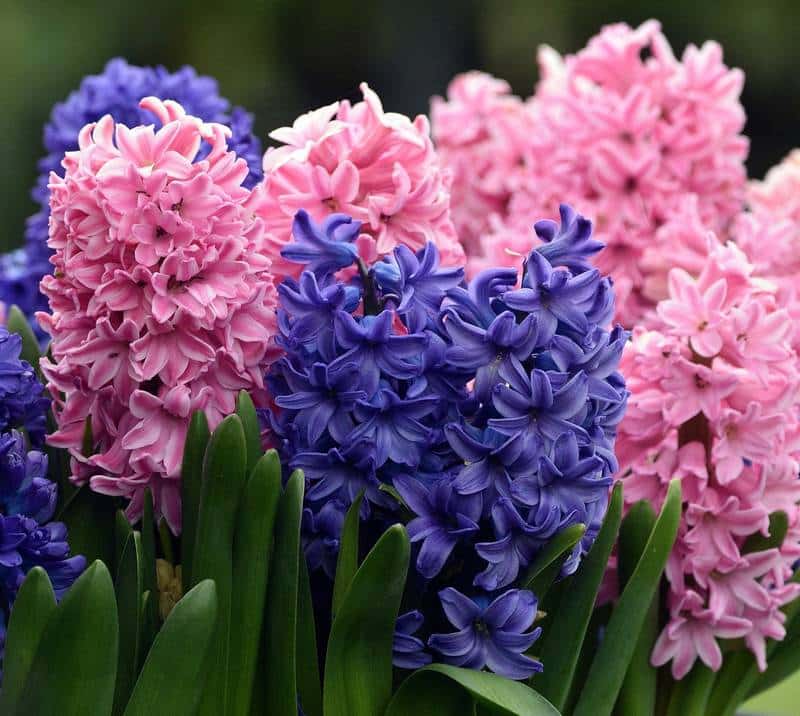
Hyacinth is toxic to dogs. The bulbs and flowers contain harmful alkaloids that can lead to a range of symptoms from gastrointestinal upset to severe respiratory distress. These beautiful spring-blooming flowers may be a lovely sight in gardens and floral arrangements, but they pose a real risk to your dog.
Are Hyacinths Poisonous to Dogs?
Hyacinths are poisonous to dogs. Both the bulb and the flower contain alkaloids that can lead to symptoms like vomiting, diarrhea, and even more severe conditions like tremors and respiratory distress. If you suspect that your dog has ingested any part of a hyacinth plant, contact a veterinarian immediately.
Hyacinth Poisoning in Dogs Symptoms
Symptoms of hyacinth poisoning in dogs include vomiting, diarrhea, and lethargy, but can escalate to more severe issues such as tremors, respiratory distress, and in extreme cases, even coma. If your dog exhibits any of these symptoms after being near hyacinths, seek veterinary care as soon as possible to minimize risks.
Train the “Leave It” Command
- Begin by holding a treat in your closed hand and presenting it to your dog without letting them take it.
- Say “Leave it” and wait for your dog to pull away from your hand.
- As soon as they pull away, reward them with a different treat and offer praise.
Training your dog with the “Leave It” command is particularly helpful when you have potentially toxic plants like hyacinths in your vicinity. It teaches your dog to disengage from something when told to, which could be lifesaving in a dangerous situation.
Train the “Drop It” Command
- Start by engaging your dog in a game of tug-of-war with a toy.
- At a random moment, say “Drop it” and stop tugging, making the toy boring.
- Once your dog releases the toy, reward them with a treat and resume playing.
Just like the “Leave It” command, the “Drop It” command can be invaluable in situations where your dog picks up a dangerous item like a hyacinth bulb. It helps to ensure that you can get them to release potentially harmful items immediately.
Having hyacinths in your garden or home may not be the best choice if you have dogs. The risks often outweigh the aesthetic benefits of these lovely flowers.
These commands will help keep your dog safe around hyacinths, but it’s important to remember that the underlying behavioral issues (curiosity, anxiety, boredom, etc.) that were causing all of this to begin with will still be present. And until you address those, any positive changes you see are only going to be temporary.
“Well, how do I make these changes last?”
By getting your dog to truly choose to follow your direction, that’s how. I tried many times to write out how you can do that before deciding it made more sense to just link you to the free video series that explains it better than I’d ever be able to.
The series is by a man named Dan who is one of the world’s leading dog obedience trainers. In it, he teaches you how to put an end to things like your dog getting too close to hyacinths and all other misbehavior using his fast and easy-to-follow methods.
In the first video, Dan will reveal to you why the two most common methods of dog training only doom you to failure. You can watch the video now by clicking here. Follow the proven system he’ll show you in his series and you’ll never have to spend another second worrying about your dog eating hyacinths ever again!
Hyacinths and Dogs
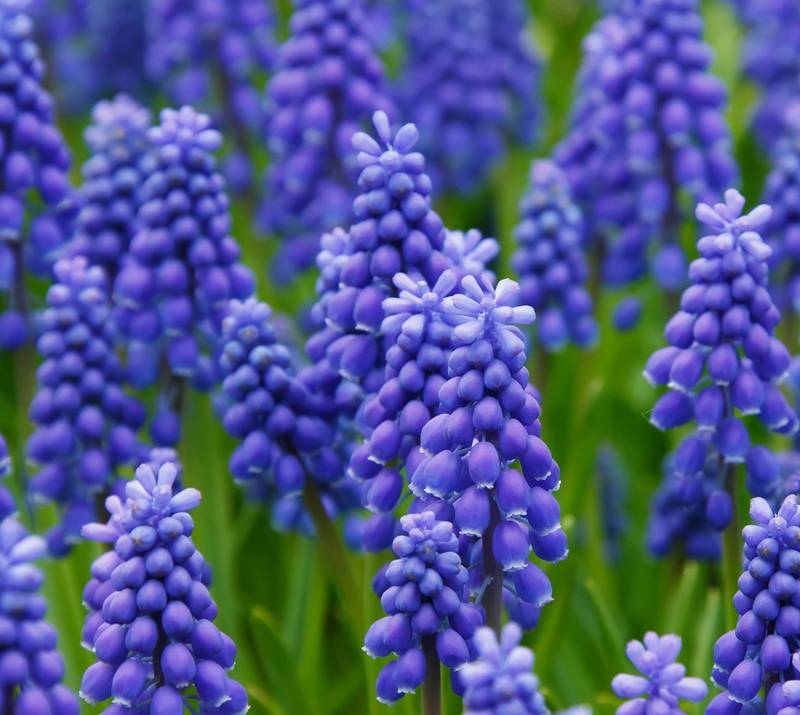
Hyacinths and dogs are not a safe combination. The plants are dangerous for dogs to eat or come into contact with. These spring-blooming flowers contain toxic alkaloids that can cause gastrointestinal distress, tremors, and even severe respiratory problems in dogs.
Can Dogs Eat Hyacinths?
Dogs cannot eat hyacinths. The plant contains toxic substances, including alkaloids, that can lead to a wide range of symptoms like vomiting, diarrhea, and even severe conditions such as tremors and respiratory distress. Exposure to any part of the hyacinth—be it the bulbs, leaves, or flowers—is dangerous for dogs and should be avoided.
Dog Ate Hyacinths, What Do I Do?
If your dog ate hyacinths, you must act quickly. Immediate veterinary attention is crucial. Your vet may induce vomiting and administer activated charcoal to absorb the toxins, among other treatments. Time is of the essence, so do not wait to seek professional help. The faster you act, the better the chances of minimizing the harmful effects.
Dog Eating Hyacinths: How to Prevent
Preventing your dog from eating hyacinths starts with either removing the plants from your garden or setting up barriers to keep your dog away from them. Physical barriers like fences can be effective, but training commands like “Leave It” or “Drop It” can also serve as additional layers of safety. Learn both now in the first section.
Make sure to keep an eye on your dog while outside to quickly intervene if they show interest in any dangerous plants.
If you’re a dog owner, it’s best to avoid hyacinths in your home or garden. If you do keep them, employ prevention methods like barriers and training commands to keep your pet safe. Immediate action and veterinary care are crucial if your dog does ingest hyacinths.
Make sure to get this issue handled right away, as it will also keep your dog safe during potential encounters with other plants. You then won’t have to stress about things like are irises poisonous to dogs, is oleander toxic to dogs, are hibiscus toxic to dogs, or are tulips poisonous to dogs.
Are Hyacinths Safe for Dogs?
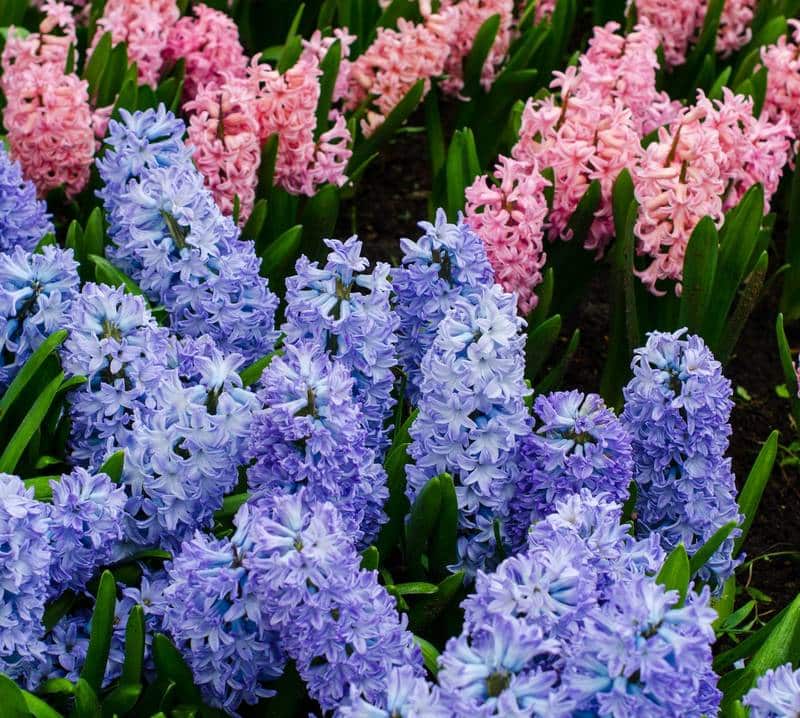
Hyacinths are not safe for dogs. These flowering plants contain toxic alkaloids that can lead to a range of health issues in dogs, including vomiting, diarrhea, and even severe respiratory problems. Given these risks, it’s essential to know how to keep your dog away from hyacinths and what alternatives are safe.
How to Keep Dogs Away From Hyacinths
Keeping your dog away from hyacinths requires a multi-pronged approach. Start by setting up physical barriers like fences or plant cages to restrict your dog’s access to the plants. If you don’t have a physical barrier, you can also place the hyacinths in elevated or hanging planters out of your dog’s reach.
Dog-Safe Alternatives to Hyacinths
If you love flowering plants but want to keep your dog safe, consider alternatives like pansies, petunias, or marigolds. These are non-toxic options that can add color and life to your garden without posing any health risks to your furry friend.
Training Commands for Prevention
Training commands like “Leave It” or “Drop It” can also help in keeping your dog away from hyacinths. Consistent training will instill these commands in your dog’s behavior, allowing you to intervene effectively if you notice your dog approaching or sniffing around the toxic plants. Learn both now in the first section.
Keeping hyacinths in your garden or home can pose a danger to your dog. Barriers and pet-safe plants can mitigate this risk, while training commands offer an additional safety net. If you want a vibrant garden or home decor that includes plants, always opt for those that are safe for your dog, and be vigilant about implementing preventive measures.
Hyacinth Flower Care
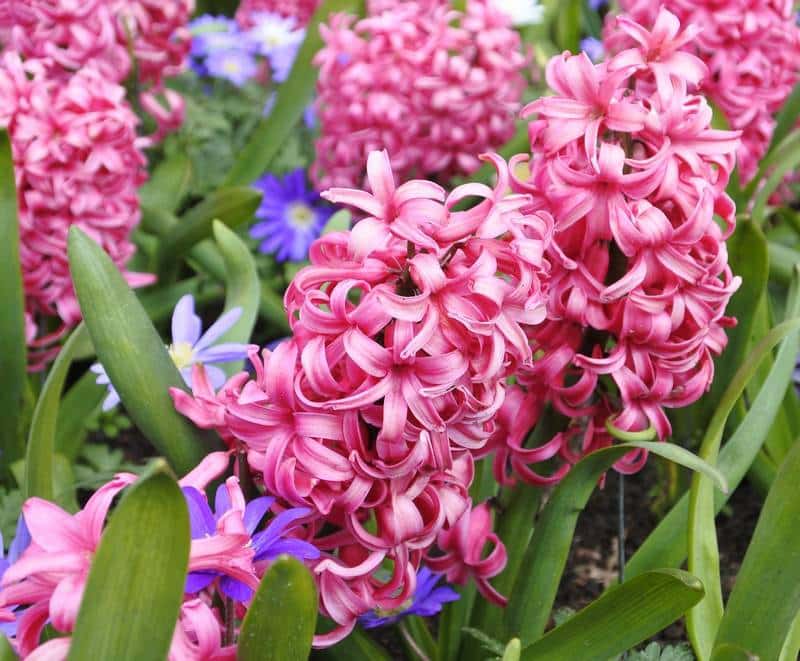
Taking care of hyacinth flowers involves proper timing for planting, understanding their growth habits, and providing them with the right conditions for flourishing. This guide will walk you through the essentials of hyacinth care, from planting to watering, so you can enjoy their beautiful blooms while keeping your canine friend safe.
Hyacinths: When to Plant
The optimal time to plant hyacinth bulbs is in the fall, several weeks before the first frost. This gives them enough time to establish their roots before winter sets in, ensuring robust growth and vibrant blooms in the spring season. The soil temperature should ideally be below 60°F when planting.
Are Hyacinths Perennials?
Hyacinths are generally considered to be perennial plants, meaning they can return year after year if cared for correctly. However, their flowering may decline over time, and you may have to replace them every few years for optimal blooming.
How to Care for Hyacinth
Proper care for hyacinths involves ensuring well-drained soil, applying a balanced fertilizer, and paying attention to pest control. It’s crucial to avoid overwatering, as this can lead to root rot. These plants also prefer full sun to partial shade, but too much direct sun can cause the blooms to fade quickly.
Hyacinth Indoors Care
For indoor hyacinths, make sure they are placed in a location that receives bright, indirect light. Keep the soil moderately moist, and ensure good air circulation to minimize risks of disease. You can also force hyacinths to bloom indoors by providing them with a cold treatment before planting.
Do Hyacinth Bulbs Multiply?
Hyacinth bulbs do have the ability to multiply, although at a slower rate compared to some other bulbs. You’ll notice small offsets forming around the main bulb, which you can carefully separate and replant for more hyacinths in future seasons.
When Do Hyacinths Bloom?
Hyacinths usually bloom in early to mid-spring, offering a burst of color and fragrance to your garden. The timing can vary depending on your climate zone and specific growing conditions, but generally, you can expect flowers between March and April.
Hyacinths in Pots
Growing hyacinths in pots is an excellent way to enjoy their beauty indoors or in small spaces. Use a well-draining potting mix and ensure adequate drainage by choosing pots with drainage holes. The care is similar to ground planting but pay extra attention to watering, as potted plants can dry out quicker.
How Often to Water Hyacinth
The frequency of watering hyacinths will largely depend on the climate and soil type. In general, water when the top inch of soil feels dry to the touch. Overwatering can lead to bulb rot, so it’s essential to maintain a balance.
While they can add a pop of color and a lovely scent to your garden, hyacinths are toxic to dogs, meaning they should be planted in areas inaccessible to your pet. Always remember to prioritize the safety of your pet when incorporating these beautiful but toxic flowers into your environment.
Learn two commands that will keep your dog safe around plants of all types by going back to the first section now.
I’m sure it’s nice to have all of your questions about hyacinths and dogs answered, so I’ll let you get going on things now. Good luck, and thanks for reading our article “Is Hyacinth Toxic to Dogs? Are Hyacinths Poisonous to Dogs?”




